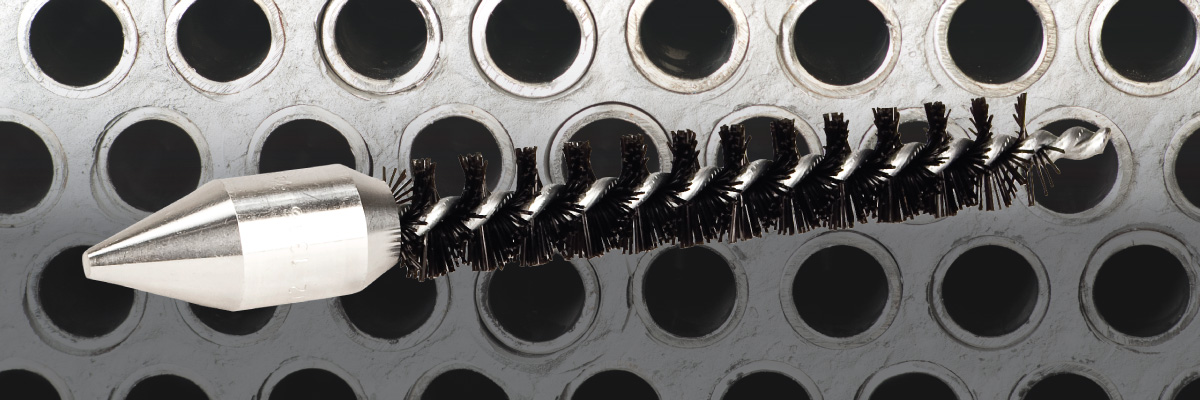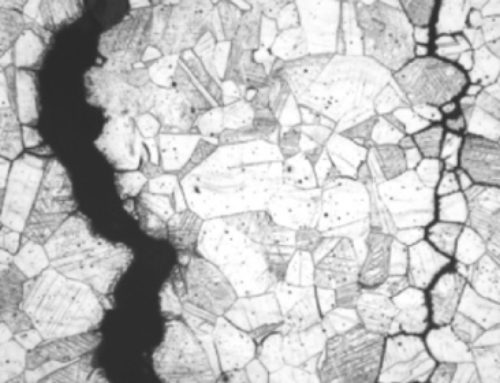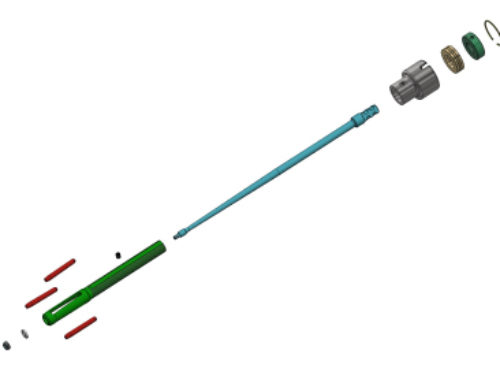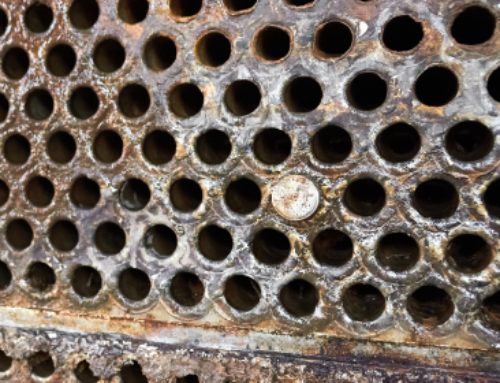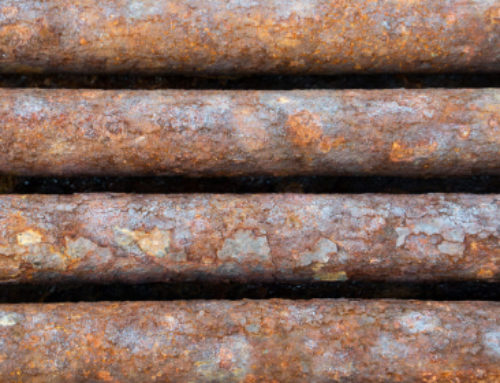Tube Pilots, also known as Tube Guides, are used to assist insertion of new manufacture or replacement tubes through tube sheets and tube support plates that are commonly found in heat exchangers, condensers, chillers, and surface condensers. Tube pilots consist of an aluminum tapered nose attached to a replaceable nylon brush. The nylon brush fits in the end of a tube, centering and holding the pilot firmly in place. The tube guide head is designed with a shoulder for the tube to rest against, eliminating the possibility of belling the tube end as the guide pushes through the support plates. The pilots also reduce “fin lock” of externally enhanced or finned tubes by keeping the finned surfaces separated during insertion.
Before selecting a tube pilot, it is important to make sure you know the OD of the tube being inserted. The pilot’s brush is designed to have the proper interference fit in order to keep the brush secured in the tube during the tube insertion process. Thus, the pilot should fit snugly inside of the tube. If it does not, that means it is either worn out from use or it’s the wrong size. If you undersize your tube pilot, there is a greater chance of it falling out during insertion.
It is best practice to start with the bottom row and work your way up the vessel. This is because the bottom tubes help support and guide the next row of tubing being inserted. In the case of a shell and tube heat exchanger, make sure to start at the center of the bottom row and work your way out. Once the bottom row is complete, repeat this on the next row, etc. This process allows you to access to the tube pilot should it become dislodged during the assembly.
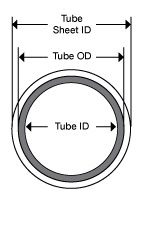
On average, an assembly operation will require enough tube pilots for 5-10% of the tubes in the heat exchanger. When inserting the tubes, make sure to only push the tube forward. Pulling it back can cause the tube pilot to be pulled from the tube prematurely. This can prolong the job and be difficult for the operator to remove.
Overall, using tube pilots can save time and labor costs by quickly guiding replacement tubes through tube sheets and support plates. These pilots are reusable and will provide many hours of repeated use.

